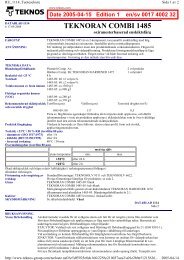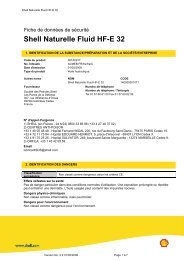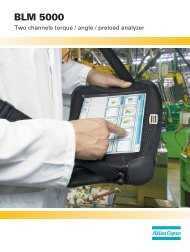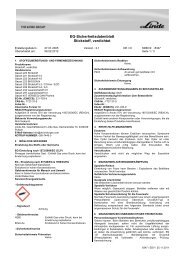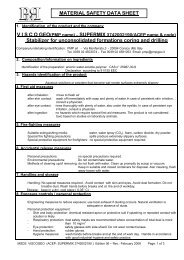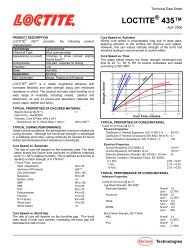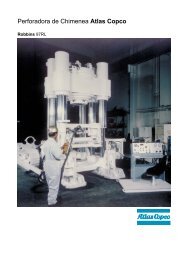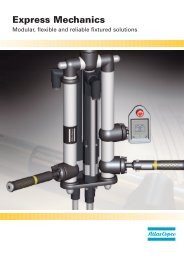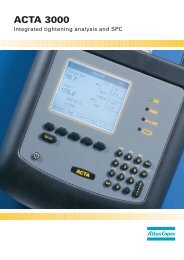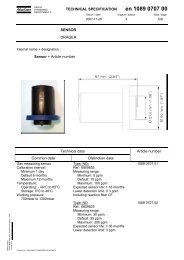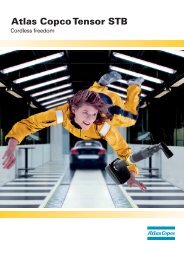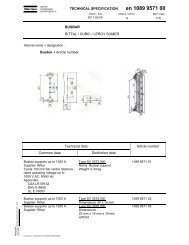Ergonomics - Atlas Copco
Ergonomics - Atlas Copco
Ergonomics - Atlas Copco
You also want an ePaper? Increase the reach of your titles
YUMPU automatically turns print PDFs into web optimized ePapers that Google loves.
tion of the outlet speed to the power of six.<br />
Therefore a low outlet speed must be main-<br />
tained. Aerodynamic noise has a high-fre-<br />
quency broad-band content. The smaller the<br />
outlet holes, the higher the frequency. Very<br />
tiny holes can take the spectrum out of the<br />
hearing range and, in that sense, reduce the<br />
dB(A) reading. However, the risk of clogging<br />
must be considered.<br />
Noise transmitted by vibration<br />
Wheel guards can be a problem in this<br />
respect. The transmitting surface is quite<br />
large. For noise reduction purposes, we<br />
want to know if the natural frequency of the<br />
guard is above or below our typical running<br />
frequencies. Whatever our aim, we must<br />
avoid running the machine at the resonance<br />
frequency of the guard.<br />
Process noise<br />
Noise generated by the process is often very<br />
difficult to eliminate. Sometimes we can<br />
change the machine type and, as as result,<br />
change the process. Changing from impact<br />
wrenches to stall torque machines is one<br />
example.<br />
Some customers may prefer to keep the<br />
impact wrenches because the tools are low<br />
in weight with low reaction torques. In such<br />
cases, impulse nutrunners may be selected.<br />
Instead of using a mechanical blow to set<br />
the nut, the impulse tools are buffered by a<br />
hydraulic cushion.<br />
Technically this is the same as filter-<br />
ing the blow to eliminate its high frequency<br />
noise emissions. When this blow enters the<br />
structure in which the joint is located, the<br />
natural frequencies in the high frequency<br />
domain will not be excited. This leads to<br />
less process noise.<br />
Evaluating noise<br />
Again the question: Can we use the declared<br />
noise levels in our comparison of the effects<br />
of different stressors? For some machine<br />
types extensive variations can occur in the<br />
process noise. For machines like grinders, in<br />
most cases the process noise is dominant.<br />
The only way to get around this dilemma is<br />
to advise the user that the noise exposure can<br />
be all the way from the dose calculated using<br />
the declared value and the estimated average<br />
exposure time, to a much higher dose depend-<br />
ing on the workpiece and individual operator’s<br />
working habits. The simple fact that different<br />
operators assume postures giving different dis-<br />
tances from noise source to ear can influence<br />
the exposure level by 6 dB(A).<br />
In the noise test the test situation has<br />
been defined as the average level from five<br />
123



